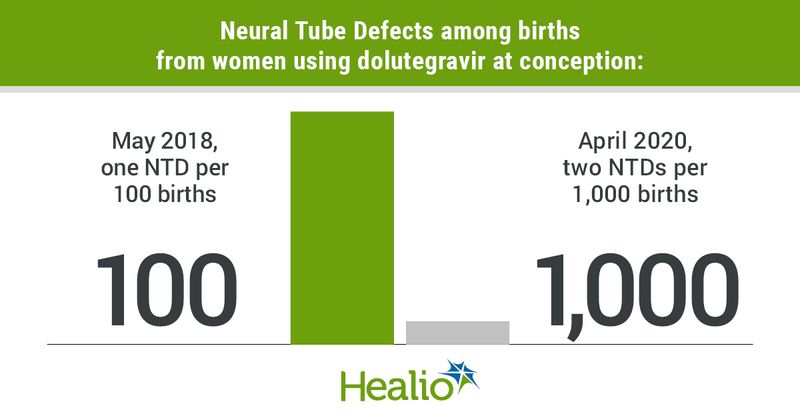New data show lower prevalence of neural tube defects in babies exposed to dolutegravir
Click Here to Manage Email Alerts
New data from the ongoing Tsepamo study in Botswana showed that the prevalence of neural tube defects, or NTDs, among babies born to women taking dolutegravir at conception appears to have stabilized at around two per every 1,000 births.
The data were presented at the International AIDS Conference by Rebecca Zash, MD, codirector of the placental scientific working group at the Harvard University Center for AIDS Research.

It marks a decline in the prevalence of NTDs detected among babies exposed to dolutegravir since the FDA first issued a safety alert warning patients and providers in May 2018, when the prevalence was reported to be about one NTD per 100 births — “way higher than the expected prevalence of one neural tube defect per 1,000 births and also significantly higher than all the other comparable groups,” Zash said during the conference.
Last year, WHO strengthened its recommendation for dolutegravir as a first-line treatment for HIV in all populations, including pregnant women, after data from Tsepamo showed the prevalence was three in every 1,000 births.
The new data from Zash and colleagues includes information from 39,200 additional births from March 2019 to April 2020. Since August 2014, Tsepamo — a surveillance study at Botswanan government hospitals that monitors birth defects based on maternal HIV status — has tracked 158,244 deliveries.
According to Zash and colleagues, over the 13 months included in the new study, there were seven NTDs in 3,591 babies born to women who were taking dolutegravir at conception — a prevalence of 0.19%.

“If you look at the prevalence, it changed over time,” Zash said. “After a period of decline since the original safety signal in May 2018, the prevalence of neural tube defects among infants born to women on dolutegravir at conception appears to be stabilizing right around two neural tube defects per 1,000 births.”
Zash said the data should allow for broader use of dolutegravir in women.
“I think if there's really one thing Tsepamo and the dolutegravir story has taught us is that women aren't a niche population in HIV,” she said. “They make up half of the people living with HIV, and maintaining gender equity in HIV treatment outcomes really requires pregnancy safety data.”


